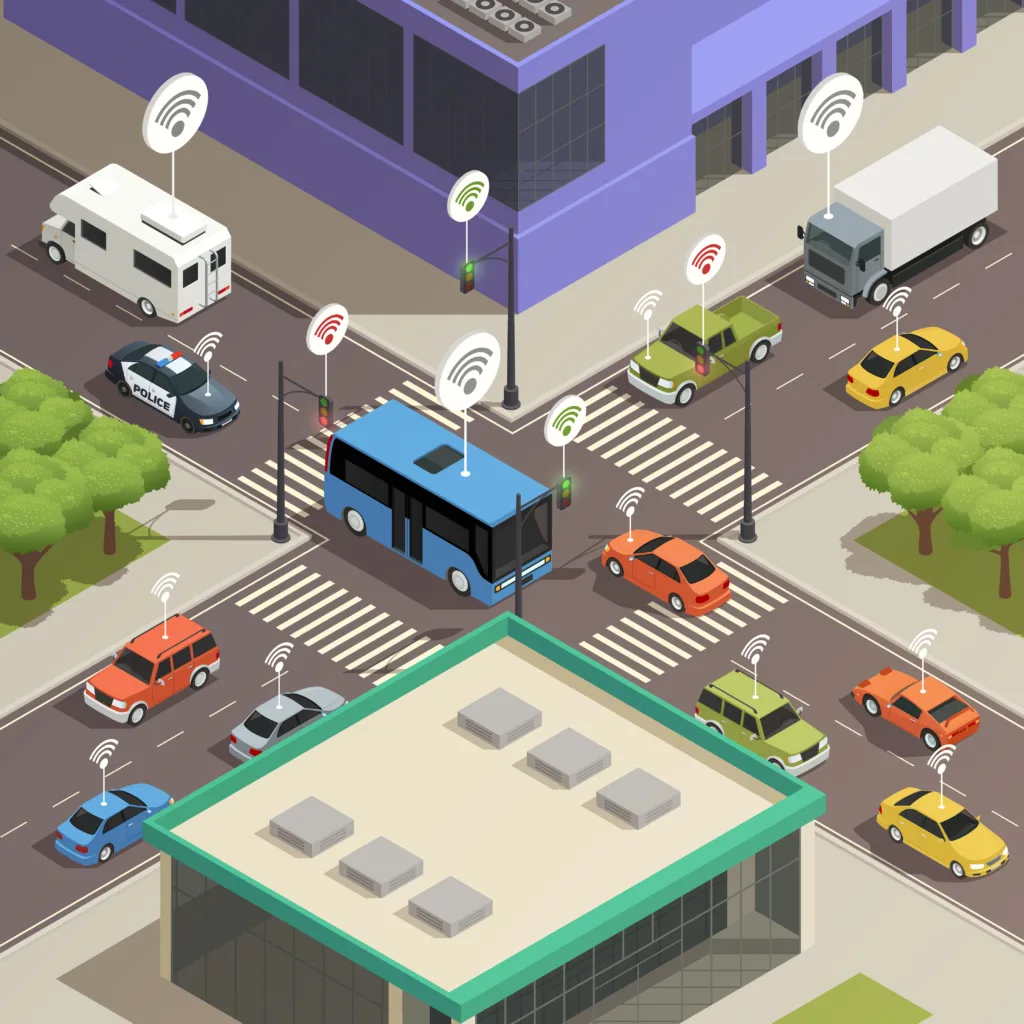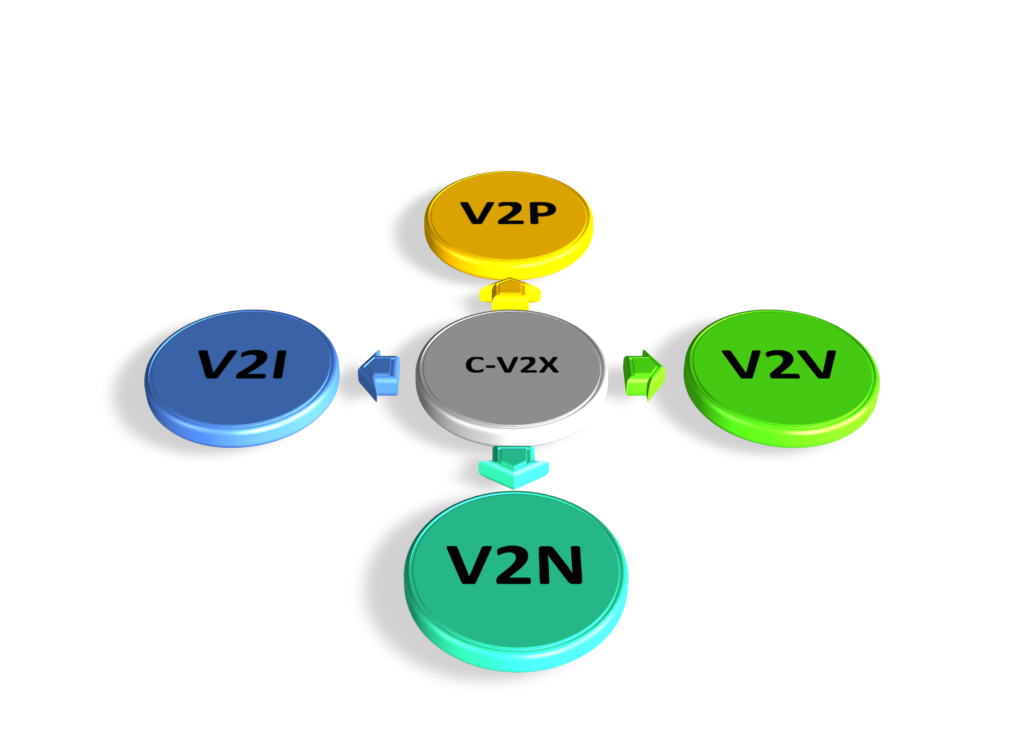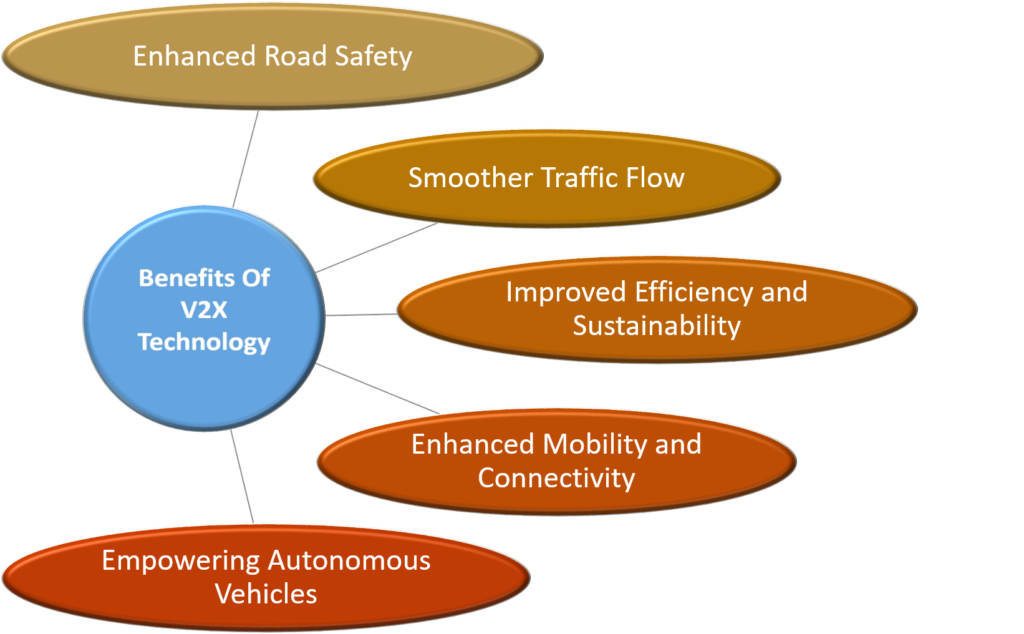
C-V2X (Cellular Vehicle-to-Everything) is a ground-breaking technology that enables vehicles to communicate with each other, pedestrians, infrastructure, and networks using cellular networks. It has the potential to revolutionize transportation by improving road safety, increasing traffic efficiency, and enabling new applications.
With its foundation in 4G LTE and 5G technologies, C-V2X seamlessly connects vehicles, infrastructure, and road users. It offers enhanced safety standards, reduced traffic congestion, and improved transportation efficiency. C-V2X is set to redefine the future of mobility as a cornerstone technology that leverages cellular networks for seamless communication and transformative impact.
Key Features and Capabilities of C-V2X
Its far-reaching implications include vehicle-to-vehicle (V2V) communication, vehicle-to-infrastructure (V2I) integration, vehicle-to-pedestrian (V2P) connectivity, and vehicle-to-network (V2N) connectivity, which collectively promotes a comprehensive ecosystem that revolutionizes the transportation landscape.

Vehicle-to-Vehicle (V2V) Communication
In the realm of V2V communication, C-V2X serves as a catalyst for collision avoidance, platooning, and cooperative maneuvers. Vehicles engage in direct exchanges, seamlessly relaying critical information such as speed, direction, acceleration, and precise location.
This real-time awareness of nearby vehicles empowers drivers with enhanced situational awareness, offering a vital layer of safety and enabling coordinated actions that can avert potentially hazardous incidents.
Vehicle-to-Infrastructure (V2I) Communication
Through V2I communication, C-V2X establishes a symbiotic relationship between vehicles and infrastructure elements. Traffic lights, road signs, and parking facilities become active participants in the network, engaging in meaningful dialogues with vehicles.
This intelligent information exchange paves the way for optimized traffic management, finely tuned traffic signal timing, and an array of enriched services including real-time traffic updates and prioritization of emergency vehicles.
Vehicle-to-Pedestrian (V2P) Communication
C-V2X’s V2P capabilities assume a paramount role in bolstering pedestrian safety. Equipped with compatible devices, pedestrians and cyclists enter a realm of augmented protection, as vehicles employing C-V2X diligently detect their presence.
Timely alerts are dispatched to both drivers and pedestrians, diligently cautioning them about impending collisions, particularly in scenarios characterized by limited visibility. This breakthrough feature holds immense potential to mitigate accidents and create a safer environment for all road users.
Vehicle-to-Network (V2N) Communication
The V2N connectivity offered by C-V2X establishes a vital bridge, enabling vehicles to access an extensive cellular network infrastructure. This connection opens up a world of possibilities, granting vehicles entry to cloud-based services, seamless reception of over-the-air software updates, and the immense benefits of high-speed internet connectivity.
Additionally, this gateway facilitates the exchange of data with centralized traffic management systems, empowering advanced analytics and informed decision-making processes that hold the key to optimized traffic flow and system-wide efficiency gains.
How does the C-V2X Communication Work?
Let’s delve into the simplified workings of C-V2X communication and explore its immense potential.
Harnessing Cellular Power:
C-V2X builds upon the existing cellular network infrastructure we rely on for our smartphones and data connectivity. By leveraging this robust network, vehicles can establish reliable and efficient communication channels, expanding their capabilities far beyond our imagination.
Communication Modes Made Simple:
C-V2X simplifies communication by employing two key modes: direct communication and network-based communication.
Direct Communication:
Just like people talking face-to-face, vehicles equipped with C-V2X can directly exchange information with nearby vehicles and infrastructure. This mode operates on a dedicated short-range communication spectrum, ensuring quick and seamless vehicle-to-vehicle and vehicle-to-infrastructure interactions.
Network-Based Communication:
Imagine vehicles extending their communication range and tapping into the power of the internet. With C-V2X, this becomes a reality. By connecting to the cellular network infrastructure, vehicles can access cloud services, traffic management systems, and other network-connected entities. This opens up a world of possibilities for smarter and more efficient transportation.
Empowering Vehicles with Information:
C-V2X equips vehicles with the ability to share and receive crucial information, enabling a safer and more informed driving experience.
Basic Safety Messages (BSMs):
Vehicles broadcast essential details such as position, speed, acceleration, and heading to nearby vehicles. This exchange of Basic Safety Messages enhances situational awareness, enabling applications that promote safety on the roads.
Real-Time Traffic Information:
C-V2X allows vehicles to receive up-to-the-minute traffic updates from various sources, including roadside infrastructure and other vehicles. Drivers can make more informed decisions, optimizing their routes and contributing to smoother traffic flow.
Protecting Vulnerable Road Users:
Pedestrians and cyclists are critical elements of the transportation ecosystem. C-V2X enables direct communication between vehicles and these vulnerable road users, issuing warnings and alerts during critical situations. This technology prioritizes safety and aims to reduce accidents involving pedestrians and cyclists.
Integration with Infrastructure:
C-V2X bridges the gap between vehicles and infrastructure elements, such as traffic signals and road signs. By receiving information from sensors embedded in the infrastructure, vehicles can optimize their behavior. Adaptive cruise control and traffic signal optimization are just a few examples of exciting possibilities.
Unlocking a World of Applications:
C-V2X serves as a platform for developing an array of innovative applications and services that capitalize on vehicle-to-everything communication. These applications include collision avoidance systems, cooperative adaptive cruise control, emergency vehicle alerts, and even traffic signal prioritization. The potential benefits are vast and extend beyond our imagination.
What are the benefits of V2X technology?
V2X technology is revolutionizing the way we interact with vehicles and our surroundings. By enabling seamless communication between vehicles, infrastructure, pedestrians, and even other devices, V2X technology opens up a world of possibilities. We will delve into the captivating benefits of V2X technology and how it is reshaping our future.

Enhanced Road Safety:
V2X technology plays a pivotal role in improving road safety. By exchanging real-time information, vehicles can detect potential hazards, such as accidents, road conditions, and sudden braking, allowing drivers to react swiftly and avoid accidents. This advanced level of communication creates a safer driving environment for everyone on the road.
Smoother Traffic Flow:
Imagine a world where traffic jams are minimized, and congestion becomes a thing of the past. V2X technology helps achieve this by optimizing traffic flow through intelligent routing, adaptive traffic signals, and coordinated merging. By sharing data among vehicles and infrastructure, V2X technology reduces bottlenecks, shortens travel times, and enhances overall traffic efficiency.
Improved Efficiency and Sustainability:
V2X technology contributes to a greener future by promoting eco-friendly driving practices. Vehicles equipped with V2X capabilities can receive information on optimal speeds, traffic conditions, and nearby charging stations, empowering drivers to make environmentally conscious choices. This leads to reduced fuel consumption, lower emissions, and a positive impact on the environment.
Enhanced Mobility and Connectivity:
With V2X technology, the concept of mobility transcends traditional boundaries. It enables seamless connectivity between vehicles and transportation infrastructure, transforming transportation into a holistic experience. Drivers can access real-time updates on parking availability, EV charging stations, and public transportation options, making commuting more convenient, efficient, and enjoyable.
Empowering Autonomous Vehicles:
V2X technology serves as a critical building block for the future of autonomous vehicles. By facilitating communication between self-driving cars and their surroundings, V2X technology enhances the safety and decision-making capabilities of autonomous systems. Real-time data exchange enables vehicles to navigate complex scenarios, anticipate pedestrian movements, and adapt to changing road conditions.
What is the Future Scope of V2X?
V2X (Vehicle-to-Everything) technology has already made significant strides in revolutionizing transportation systems. However, its future potential is even more promising. As the technology continues to advance and gain traction, its scope extends beyond traditional applications. In this article, we explore the future horizons of V2X and how it is set to transform industries and shape our daily lives.
Smarter Cars and Self-Driving Vehicles:
Imagine cars that can talk to each other, traffic lights, and even pedestrians. That’s the future of V2X. It will help intelligent and self-driving cars communicate better, making our roads safer and traffic flow smoother. This means fewer accidents and more efficient transportation.
Creating Smart Cities:
V2X technology can be a game-changer for smart cities. By connecting vehicles to smart infrastructure, we can improve traffic management, reduce congestion, and plan cities better. Cars will communicate with traffic lights, parking systems, and public transportation, making our cities more connected and efficient.
Faster Emergency Services:
V2X can revolutionize emergency services by providing real-time information to responders. When accidents happen, V2X-enabled vehicles will automatically alert emergency services, helping them arrive faster and save lives. This technology will make emergency response more efficient and effective.
Optimizing Fleet Management:
For businesses with vehicle fleets, V2X offers tremendous benefits. It provides real-time data on vehicle location, performance, and maintenance needs. This helps fleet managers optimize routes, predict maintenance issues, and save costs. It also reduces environmental impact by improving fuel management.
Connected and Entertaining Rides:
V2X opens up exciting possibilities for connectivity and entertainment in vehicles. Passengers will enjoy seamless internet access, personalized services, and entertainment options. Cars will provide real-time updates on nearby attractions, shopping recommendations, and even personalized advertisements, making our rides more enjoyable.
Conclusion:
The future of V2X is full of promise. It will transform transportation and go beyond that, impacting industries and our daily lives. From smarter cars and self-driving vehicles to creating smart cities and improving emergency services, V2X will revolutionize how we live and travel. By embracing this technology, we’re moving towards a connected, efficient, and safer future for everyone.
